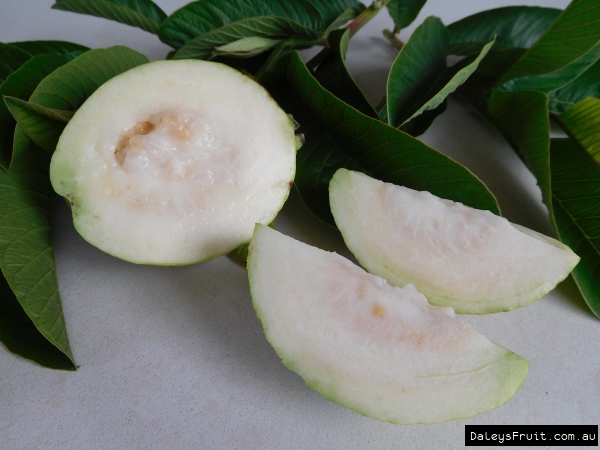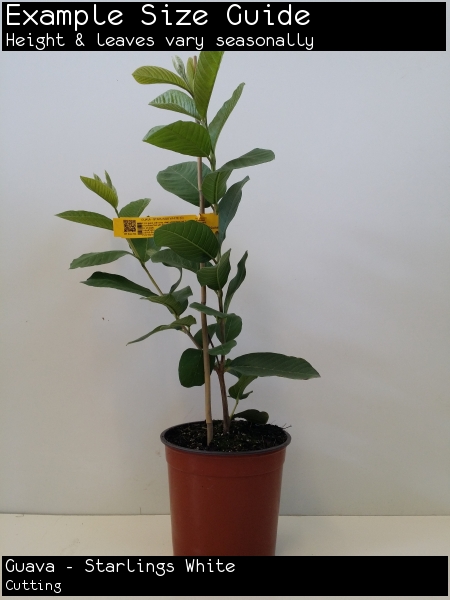Guava - Starlings White
Psidium guajava$27.00 ($27.00-$49.00 choose a size)
When will it be in Stock?
We previously had the most to buy in Oct and Dec. With limited quantities for sale in other months. They are unlikely to be available in Apr and Jun. Special Note: This plant is in the top 25% of plants customers are wanting to know about. It is very unlikely that you will be able to purchase this plant unless you click above to be notified when it is in stock again. Please expect a delay on this item as we notify those who have waited the longest .
Specifications of Guava - Starlings White
Preferred Climate Tropical, SubtropicalLearn About Climate Zones
Grown From CuttingLearn About Propagation Methods
Max Height (when in the ground with good conditions) 2-5m
Plants required to Pollinate 1 (Self Pollinating)Learn about Pollination
Can it Handle Frosts? Likes Temps above 5deg
Amount of leaves in Winter? All Leaves (Evergreen)
Quarantine Restrictions to these Areas SA, WA
Suitability in Pots Yes with 35L+ Pot
Water Requirements Moderate Watering
Is it a Dwarf Fruit Tree? Can be pruned to 2m
Time to Fruit/Flower/Harvest 2-3 Years
Sun or Shade Full (Sun:80%-100%)
Preferred Soil Type Good Drainage
Soil pH Neutral (6.6-7.3pH)
Fruiting/Harvest Months October, November
Create a Filter to find similar plants
Customers also bought
These plants are often purchased together. Also check plant information for suitability in your orchard.
Mandarin - Okitsu wase (Satsuma)
$39.00
Nashi Pear Chojuro
$39.00 ($39.00-$42.95 choose a size)
Jaboticaba Large Leaf
$29.00 ($17.75-$79.00 choose a size)
Olive - Coratina
$29.00 ($14.90-$29.00 choose a size)
Malabar Chestnut
$29.00 ($12.75-$59.00 choose a size)
Dwarf Mulberry - Black
$21.00 ($19.75-$79.00 choose a size)
Customer Tips & Reviews Guava - Starlings White
Guava - Starlings White
I love guavas and wanted to have a plant at home. I do not have any experiencing guavas. Hopefully I will learn something as I grow them.
Guava - Starlings White
Our tree tends to flower and fruit nearly all year. As it flowers on new wood, I have pruned each branch after I have picked the fruit. This keeps the tree (shrub) small and compact. The fruit are large and the branches need support when it has fruit on.
































